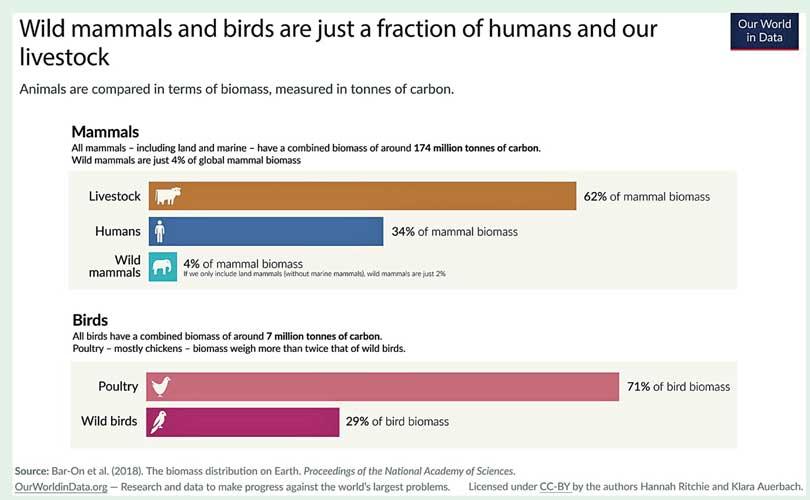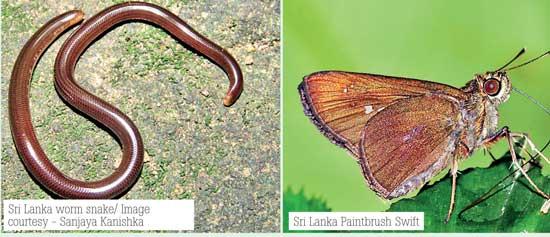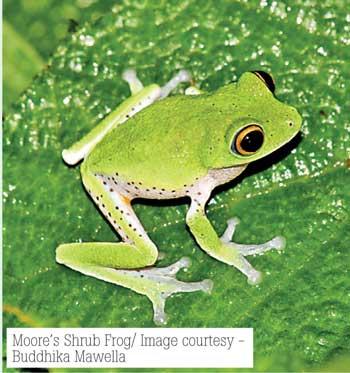04 Mar 2024 - {{hitsCtrl.values.hits}}

Apart from charismatic species such as the leopard, elephant and blue whale, Sri Lanka is home to many other endemic species. But in recent years, the environment has been at the receiving end of haphazard decisions which are rapidly impacting the country’s natural balance of life.
 Apart from charismatic species such as the leopard, elephant and blue whale, Sri Lanka is home to many other endemic species. But in recent years, the environment has been at the receiving end of haphazard decisions which are rapidly impacting the country’s natural balance of life. As a result, around 400 Critically Endangered Endemic Species in Sri Lanka are on the fast-track to extinction.
Apart from charismatic species such as the leopard, elephant and blue whale, Sri Lanka is home to many other endemic species. But in recent years, the environment has been at the receiving end of haphazard decisions which are rapidly impacting the country’s natural balance of life. As a result, around 400 Critically Endangered Endemic Species in Sri Lanka are on the fast-track to extinction.
An imbalance of global biomass
 With the arrival of humans, the wild land mammal biomass has reportedly declined. The biomass gives a measure of the total biological productivity of an ecosystem. Prof. Sampath Seneviratne, Professor in Zoology at the Department of Zoology and Environmental Sciences, University of Colombo said that recent studies have shown another alarming trend with regards to the global biomass of wild animals. “The figures in these studies indicate that around 60% of mammalian biomass on this planet are livestock – pigs, goats and cattle while 36% comprise humans. So only 4% mammalian biomass is wild. This is shocking. In birds, about 71% of biomass includes livestock such as chicken, ducks and turkey while around 30% of it include wild birds. So there’s a high proportion of wild birds compared to wild mammals. These aspects add human pressure and are issues faced by endangered species. Climate change is real in certain locations such as mountains, glaciers, polar regions etc., and it will affect the entire planet. But in Sri Lanka the main problem is habitat destruction.”
With the arrival of humans, the wild land mammal biomass has reportedly declined. The biomass gives a measure of the total biological productivity of an ecosystem. Prof. Sampath Seneviratne, Professor in Zoology at the Department of Zoology and Environmental Sciences, University of Colombo said that recent studies have shown another alarming trend with regards to the global biomass of wild animals. “The figures in these studies indicate that around 60% of mammalian biomass on this planet are livestock – pigs, goats and cattle while 36% comprise humans. So only 4% mammalian biomass is wild. This is shocking. In birds, about 71% of biomass includes livestock such as chicken, ducks and turkey while around 30% of it include wild birds. So there’s a high proportion of wild birds compared to wild mammals. These aspects add human pressure and are issues faced by endangered species. Climate change is real in certain locations such as mountains, glaciers, polar regions etc., and it will affect the entire planet. But in Sri Lanka the main problem is habitat destruction.”
Road networks and biodiversity loss
 In terms of threats posed to wildlife, a road is the first indicator of an impending danger. Roads are identified as the second biggest agent of biodiversity loss. “Why? Because with roads come deforestation, desertification, pets, fires, invasive species, encroachment and other associated negative effects of people. Initially you will see a temporary fruit vendor, then people will realise the potential of putting a bigger shop, then the government will tax them, then there will be parking lots, then somebody will come with forged deeds and purchase lands and this is how humans encroach sensitive ecosystems. The global road network has increased by six folds and this is a figure obtained 10 years ago. In Sri Lanka there are more roads even in places where there is no housing or people. People build roads thinking it would bring stability to human society but it is actually collapsing the environment. These haphazard decisions would ultimately lead to the 43% loss of livelihoods mentioned earlier.”
In terms of threats posed to wildlife, a road is the first indicator of an impending danger. Roads are identified as the second biggest agent of biodiversity loss. “Why? Because with roads come deforestation, desertification, pets, fires, invasive species, encroachment and other associated negative effects of people. Initially you will see a temporary fruit vendor, then people will realise the potential of putting a bigger shop, then the government will tax them, then there will be parking lots, then somebody will come with forged deeds and purchase lands and this is how humans encroach sensitive ecosystems. The global road network has increased by six folds and this is a figure obtained 10 years ago. In Sri Lanka there are more roads even in places where there is no housing or people. People build roads thinking it would bring stability to human society but it is actually collapsing the environment. These haphazard decisions would ultimately lead to the 43% loss of livelihoods mentioned earlier.”
Apart from that, more cats, dogs, rats and invasive species which are either domesticated or predatory in nature would cause an imbalance in wildlife populations.
What can humans do?
Perhaps the ever increasing human population will add more pressure to the planet. Humans are carnivorous, they consume other resources and have a larger environmental footprint. “Therefore the voices of government ministries, NGOs and other stakeholders are often subdued. As such it’s an uphill battle for these institutions to withstand the pressure. People demand better houses, roads and every better thing comes at the expense of the environment.”
“One thing we can do is to protect the existing footprint of habitats,” Prof. Seneviratne suggested. “If you protect habitats these species have a better chance of survival. We have about 17% wilderness and we must protect it as a starter. These include rainforests, montane forests, wetlands, grasslands and the ocean. When you isolate a smaller population they die by  themselves. There are certain threshold values to maintain a viable population. The problem in Sri Lanka is that even though we have 17% wilderness these are highly fragmented and there are more and more empty forests. We see that birds are disappearing as well, not just mammals due to issues of isolation. They are genetically crippled and eventually die. To avoid that you need to have thin strips of corridors. You have to safeguard the existing natural habitats and connect them with thin strips of habitat corridors so that wild populations don’t become isolated. The Emerald Corridor project run by the WNPS is one such initiative where there will be privately owned habitat corridors to facilitate interactions between plants and animals to prevent them from being isolated. Such initiatives would eliminate negative impacts of isolation such as infertility.”
themselves. There are certain threshold values to maintain a viable population. The problem in Sri Lanka is that even though we have 17% wilderness these are highly fragmented and there are more and more empty forests. We see that birds are disappearing as well, not just mammals due to issues of isolation. They are genetically crippled and eventually die. To avoid that you need to have thin strips of corridors. You have to safeguard the existing natural habitats and connect them with thin strips of habitat corridors so that wild populations don’t become isolated. The Emerald Corridor project run by the WNPS is one such initiative where there will be privately owned habitat corridors to facilitate interactions between plants and animals to prevent them from being isolated. Such initiatives would eliminate negative impacts of isolation such as infertility.”
He further said that individual species should be preserved. “The most alarming scenario is what is happening to elephants. We kill a lot of animals as roadkills. While securing existing natural habitat patches there has to be unhindered connectivity to prevent individuals getting removed from the system. Establishing a canopy, overpasses, underpasses and bridges are great ways to connect these ecosystems together. For that you have to identify critical locations and establish these innovations. On the other hand, lifestyle changes should also be considered. People should say no to wild meat and the targeted live animal trade. If you protect the species they will eventually protect the climate.”
Preserving Sri Lanka’s ‘Critically Endangered Endemic Species’
The IUCN Red List indicates a list of species under various criteria. These include vulnerable, threatened, endangered, near endangered, critically endangered and extinct. “We have identified about 400 Critically Endangered Endemic Species in Sri Lanka. Many of these species have been pushed to this category as they are not flashy or charismatic like other bigger species. Therefore, the WNPS in collaboration with Hemas initiated a project de-extinct these 400 species. We do 10 species at a time and we are now in the second phase. This is a long term commitment by WNPS and Hemas to slow down the pace at which these species are being subject to extinction and to identify ways to reverse the process. In this project we work with researchers, corporates, plantations and other stakeholders to create stories about the not-so-flashy species as means of preventing them from becoming extinct,” he said in his concluding remarks.
27 Dec 2024 20 minute ago
27 Dec 2024 50 minute ago
27 Dec 2024 1 hours ago
27 Dec 2024 2 hours ago
27 Dec 2024 2 hours ago